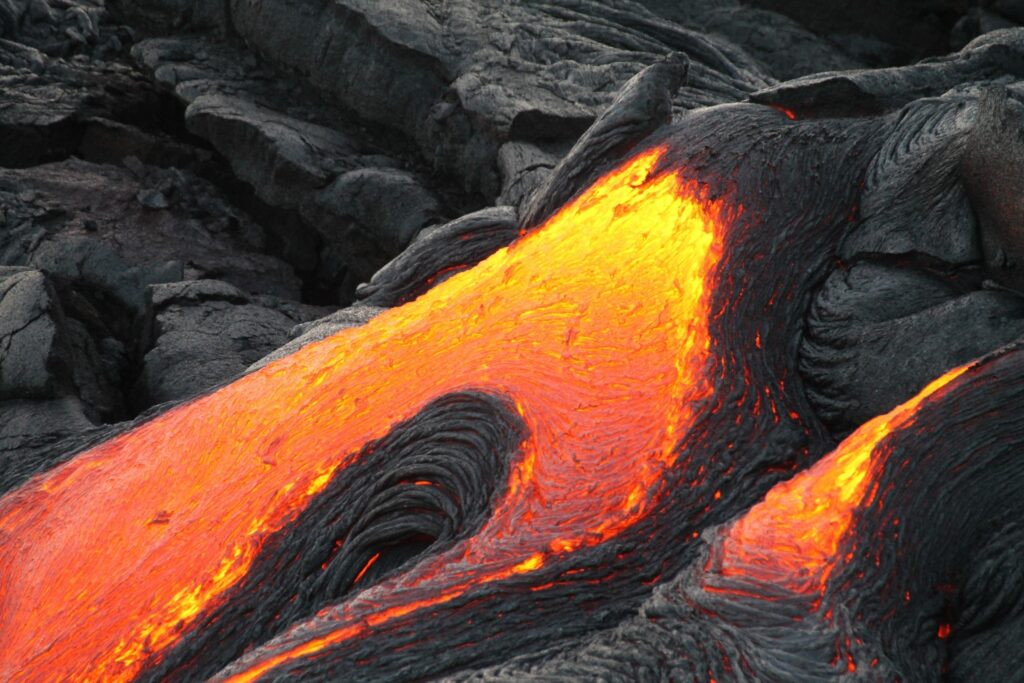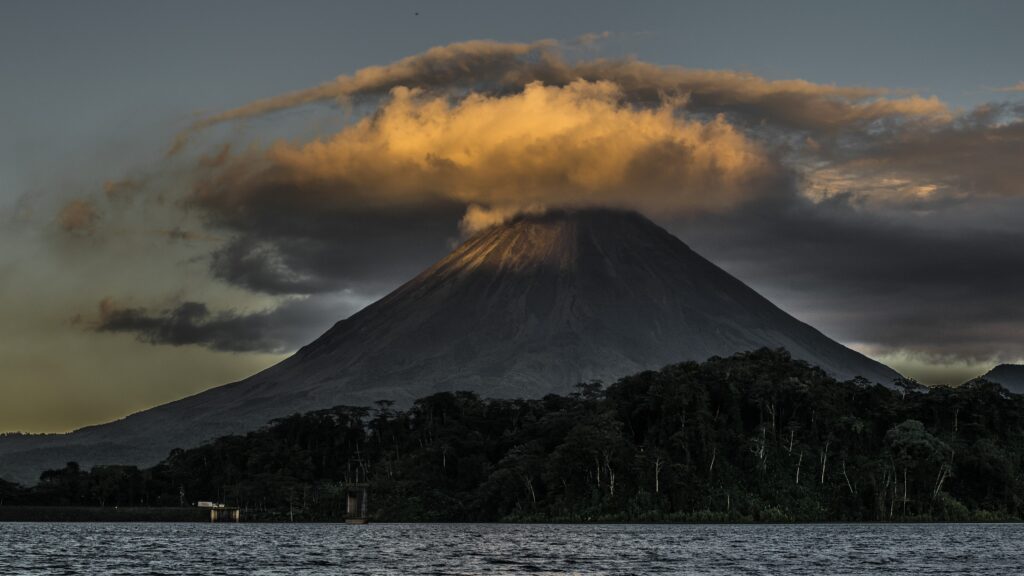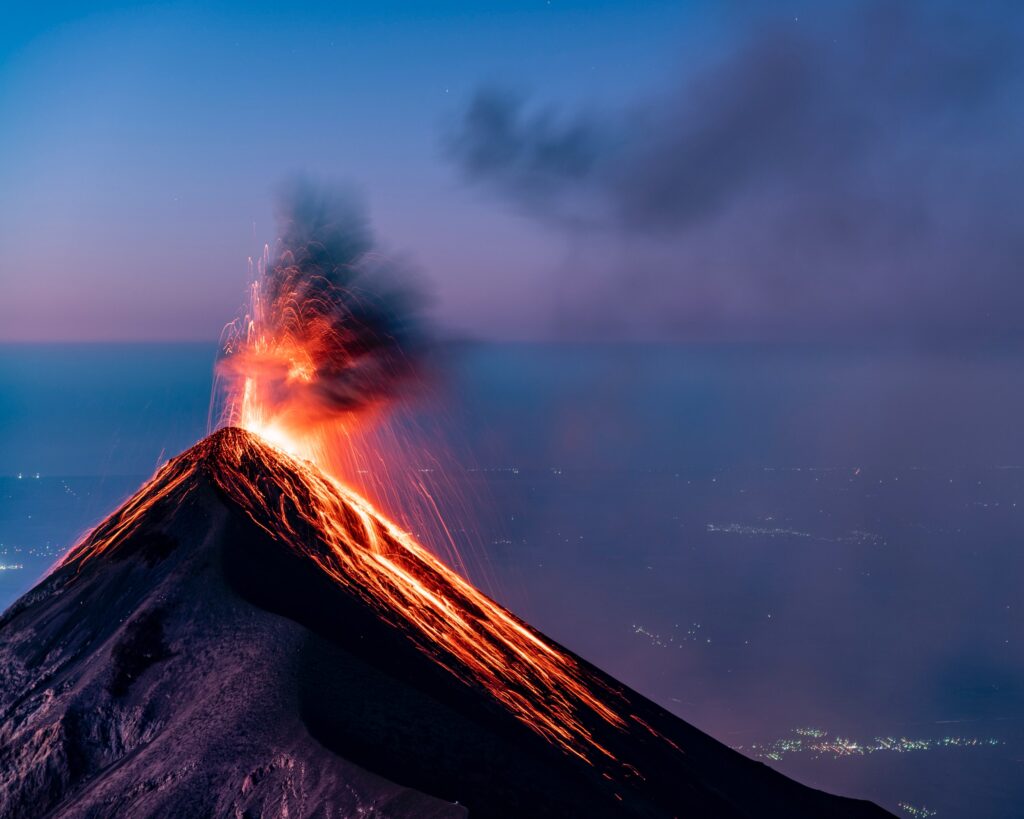Volcanic Eruption
Deep within the Earth it is so hot that some rocks slowly melt and become a thick flowing substance called magma. Since it is lighter than the solid rock around it, magma rises and collects in magma chambers. Eventually, some of the magma pushes through vents and fissures to the Earth’s surface. Magma that has erupted is called lava.

Figure 1. Cooling lava
Some volcanic eruptions are explosive and others are not. The explosivity of an eruption depends on the composition of the magma. If magma is thin and runny, gases can escape easily from it. When this type of magma erupts, it flows out of the volcano.If magma is thick and sticky, gases cannot escape easily. Pressure builds up until the gases escape violently and explode.
The relationship between volcanoes and climate is very complex. To understand it correctly, we have to focus on the gases and the dust particles released during an eruption.
Particles of dust and ash
Volcanic ash or dust released into the atmosphere during an eruption shade sunlight and cause temporary cooling. Larger particles of ash have little effect because they fall out of the air quickly. Small ash particles form a dark cloud in the troposphere that shades and cools the area directly below.

Figure 2. An active volcano
Sulfur
Erupting volcanoes emit sulfur dioxide into the atmosphere. Sulfur dioxide is much more effective than ash particles at cooling the climate. The sulfur dioxide moves into the stratosphere and combines with water to form sulfuric acid aerosols. The sulfuric acid makes a haze of tiny droplets in the stratosphere that reflects incoming solar radiation, causing cooling of the Earth’s surface. The aerosols can stay in the stratosphere for up to three years, moved around by winds and causing significant cooling worldwide. Eventually, the droplets grow large enough to fall to Earth.

Figure 3. Cloud formed by a volcano
Greenhouse gases
Volcanoes also release large amounts of greenhouse gases such as water vapor and carbon dioxide. The amounts put into the atmosphere from a large eruption doesn’t change the global amounts of these gases very much. However, there have been times during Earth history when intense volcanism has significantly increased the amount of carbon dioxide in the atmosphere and caused global warming.
Figure 4. Schematic overview of the climate effects after a very large volcanic eruption. Source: Timmreck, 2012.
Climatic Effects
The increase in sulfate aerosols in the stratosphere has three main climatic effects.
- The first one is the scattering effect. These aerosols scatter the incoming solar radiation and produce the surface cooling.
- The second one is the absorption effect. Aerosols absorb near Infrared radiation and longwave infrared radiation (both incoming and outgoing) and produce stratospheric heating, affect atmospheric circulation and lead to warm winters in the Northern Hemisphere (NH) in the 1-2 years after a stratospheric eruption.
- The third effect is an ozone destruction effect. Very effective destruction of ozone happens due to altered chemistry and perturbed heating rates. The decrease in the ozone level effects stratospheric climate which leads to widespread atmospheric changes and to an increase in solar ultraviolet radiation reaching the surface.
References
- Timmreck, C. (2012). Modeling the climatic effects of large explosive volcanic eruptions. Wiley Interdisciplinary Reviews: Climate Change, 3 (6), 545-564.
- USGS

